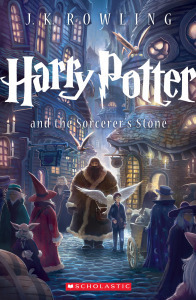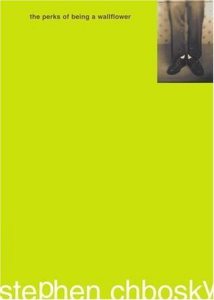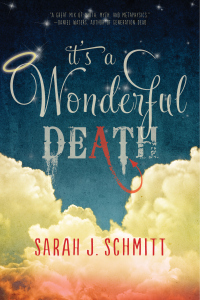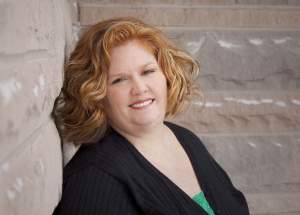Banned Books Month Guest Post from Sarah J. Schmitt: Why Teens Need Challenged Books
As a librarian and author, I talk about banned books a lot. And, I am often baffled by the challenging of books like THE ABSOLUTELY TRUE DIARY OF A PART-TIME INDIAN, THIRTEEN REASONS WHY and HARRY POTTER. Yes. I said HARRY POTTER. I find myself questioning if those filing the complaints have actually read the book they propose to censor or are just going off of what they think the books is about. Case in point, when I read about a magical orphan who is welcomed and loved by a group of people who come to think of them as their own son, it boggles the mind how the story could ever be challenged on the basis of being anti-family.

Scholastic, Reprint Edition, August 2013.
And when I get into conversations about challenged books with others, I often end the conversation with some variation of “sometimes a fiction story is just a story and people need to relax.” But I posit that teens need challenged books. And before you ask why, here’s the answer. Because we don’t want to talk about the subject matter contained in these book. They are stories about experiences and consequences that only a few decades ago were shameful and rarely discussed in public. And just because we talk about the subjects more, doesn’t mean they don’t make us uncomfortable. As a society, need to be made aware of these books. And authors need to be brave enough to write these books.
According to the Office of Intellectual Freedom, from 2000-2009, 5,099 challenges were reported. The top five challenge categories sited were “sexually explicit” material, “offensive language,” materials deemed “unsuited to age group,” “violence,” and “homosexuality.”
Now, for the purpose of this post’s length, I’m going to put aside the “offensive language” and “unsuited to age group” because those are two of the reasons CAPTAIN UNDERPANTS took the number one spot in 2013, and coincidentally, these are two of the same reasons used to challenge THE PERKS OF BEING A WALLFLOWER.

MTV Books, February 1999.
Just for a moment, let’s talk about sex, baby. “Sexually explicit” challenges, is a pretty broad spectrum. Questionable subject matter can run the gauntlet from consensual underage sexual experiences to pregnancy to rape and incest. These are topics that teens, regardless of gender, socio-economic status, or race are facing every day. One of the most powerful gifts of literature if the ability to make the reader feel like they aren’t alone. Like many characters in YA lit, there are teens who have had their innocence stolen from them. Or they have willingly decided to share their bodies with someone else only to have the act sullied by attacks via social media. And still there are others who have fallen victim to someone who was supposed to care for and protect them. They may believe there will be retribution if they speak up or fear the reaction from their friends and family when the truth comes to light. But when authors are willing to address the positive and negative issues associated with sex in an authentic manner, they create a safe space for teens to confront their own fears and maybe (hopefully) find the courage to speak up.
Let’s shift to violence. Now, as a K-8 librarian, this is one area I struggle with a bit. The reality is that there are a lot of YA books that could be considered violent and I do have an obligation to consider the innocence of ALL students who enter my classroom. In some cases, I have pulled books or restricted checkout to older students. And I am occasionally questioned about why certain titles are a part of the collection. (A side note: Last year, a parent brought up THE SISTERHOOD OF THE TRAVELING PANTS and asked why, at a Catholic school, a book where the main character has sex, would be available to her seventh grade daughter. My former principal’s response was “Has she read the Old Testament? If so, then she’s read much worse.” Best defense ever.) Back to my point regarding violence in YA lit. I think one thing that has increased the perceived level of violence in books being published is the trend of dystopian, which is, by its definition, is a society that is dehumanizing, thus setting the scene for extreme violence. But that kind of violence isn’t confined to fiction. Don’t believe me? Turn on the nightly news and you will see that the same violence referenced in the challenged books really isn’t fiction. It’s real and it’s happening right now. Millions of people are displaced as bombs destroy their home. The mastermind of the plan is the person who is supposed to lead them. Sound familiar? But we don’t even have to look to the other side of the world for violence. We live in a violent time. We live in a time where any small town Mayberry-esque could easily be the scene of a horrific murder-suicide. And these acts aren’t going to stop unless we talk about the underlying causes of violence. Mental health, institutional and societal racism, religious intolerance, and just plain hatred. We need books that make us take notice of the lives other people have lived and lost.

Sky Pony Press, October 2015.
So what about homosexuality? I don’t know if you’ve noticed it or not, but this year has been an outstanding year for YA literature addressing LGBTQIA issues. In case you don’t know what those letters stand for, they are Lesbian, Gay, Bisexual, Transgender, Queer, Intersex, and Asexual. I am proud that several of the authors of these books are also friends of mine and I applaud their efforts to give a voice to teens struggling with their own journey of coming out and living the life they deserve to live. And while we see the political landscape of our country evolving, the hearts and minds of the individual aren’t always as quick to change. There are still teens struggling to come to terms with who they are. They are afraid of what will happen when they tell their parents or their best friend. Characters in books have the ability to be an inspiration. We need characters that challenge the status quo and unfortunately, as a result, these amazing books I mentioned earlier might face challenges of their own in the coming years.
My point is that we don’t need more banned books. We certainly don’t need censorship. But we do need books that force us take a good hard look in the mirror and see the reality of our social reflection. We need books that can open the door to talking about the issues that teens face every day. We need books that give us an idea of what it’s like to walk in another human being’s shoes. We need books that show us how bad the world could be so that we can figure out a way to avoid it. Challenged books are important to the teen experience not because they are controversial but because they give us an avenue to evolve beyond the life we are born into. They give us hope and challenge our assumptions. In short. They make us better.
So read a book that’s on the challenged list. Find out what the fuss is about. And then talk about how it can make you better. BE FEARLESS when it comes to reading. You never know how it might change your life.

Sarah J. Schmitt.
Sarah J. Schmitt has bachelor’s degrees in political science and psychology as well as a master’s degree in higher education administration, but she has always loved writing fiction. She is a K-8 school librarian part-time and youth service professional for teens at her public library. Sarah currently lives with her husband and two kidlets near Indianapolis, Indiana.








